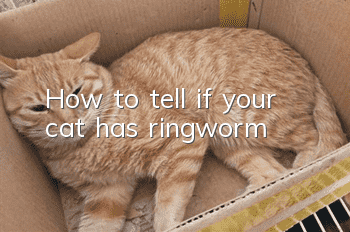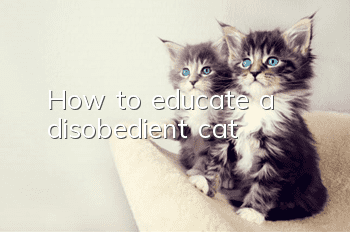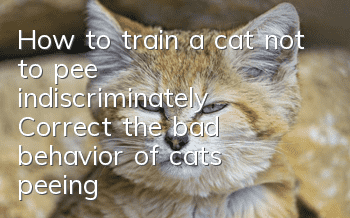What should I do if Garfield always sheds tears? What should I do if Garfield sheds tears?

What should I do if Garfield always sheds tears? Garfield’s constant tears are not only distressing for the cat, but also a big problem for the cat’s facial beauty. So how to solve the problem of tears?
The common cause of excessive tears in cats is conjunctivitis or obstruction of the nasolacrimal duct. Owners of cats who shed tears must undergo professional examination and treatment to achieve twice the result with half the effort.
1. Cause: The most common cause of cat conjunctivitis is infection with the feline herpes virus.
Symptoms: Cat conjunctivitis is usually a latent infection with no clinical symptoms. However, when the cat is under stress or its resistance is reduced, the virus activates and proliferates, causing inflammation and irritation of the cornea, causing eye pain and discomfort. There will be conjunctival keratitis in the eyes. The owner will find that the cat has more tears, or is accompanied by squinting in the eye for a long time, blepharospasm and entropion, or an increase in brown secretions.
Treatment: Owners can give cats daily oral antiviral drugs to inhibit virus activation and proliferation. This drug can also resist stress. It is a safe and useful cat nutritional supplement that can be given for a long time. If secondary bacterial infection and eye discharge occur, broad-spectrum antibiotics and antiviral drugs can be used, and the cat's chance of being stressed should be minimized in daily life.
2. Cause: There are two causes of nasolacrimal duct obstruction: congenital and acquired:
Congenital causes: It mostly occurs in purebred cats. The most common reason is that the duct structure of the nasolacrimal duct system is too bent.
Acquired causes: Nasolacrimal duct obstruction or stenosis caused by previous eye inflammation, such as conjunctivitis and nasolacrimal duct inflammation, especially in those who have had feline herpes virus.
Symptoms: This will cause the cat to have excessive tears that overflow onto the face.
Treatment: Cat nasolacrimal duct obstruction can be treated by nasolacrimal duct irrigation under anesthesia. But treatment for congenital problems is often ineffective. For acquired nasolacrimal duct obstruction, doctors can perform dilation of the nasolacrimal duct opening and flush the lumen with anti-inflammatory drugs. Cats with secondary bacterial infections must be treated with antibiotics.
If the cat is crying, the owner must take the cat to the hospital for early treatment as soon as possible, so as not to let the cat become the "Sister Lin" who sheds tears every day.
- Are mosquito repellents harmful to cats?
- What are the causes of cats having fever? Have you noticed it?
- Why is my cat’s eyes bloodshot?
- Chinchilla feeding methods and precautions
- What is feline coccidiosis
- Will cats suffocate if left in the car?
- Do Ragdoll cats bite people?
- Can a cat hold back for eight hours without peeing?
- Will cats get entangled in their intestines if they eat hair?
- Can blue cats eat milk?



